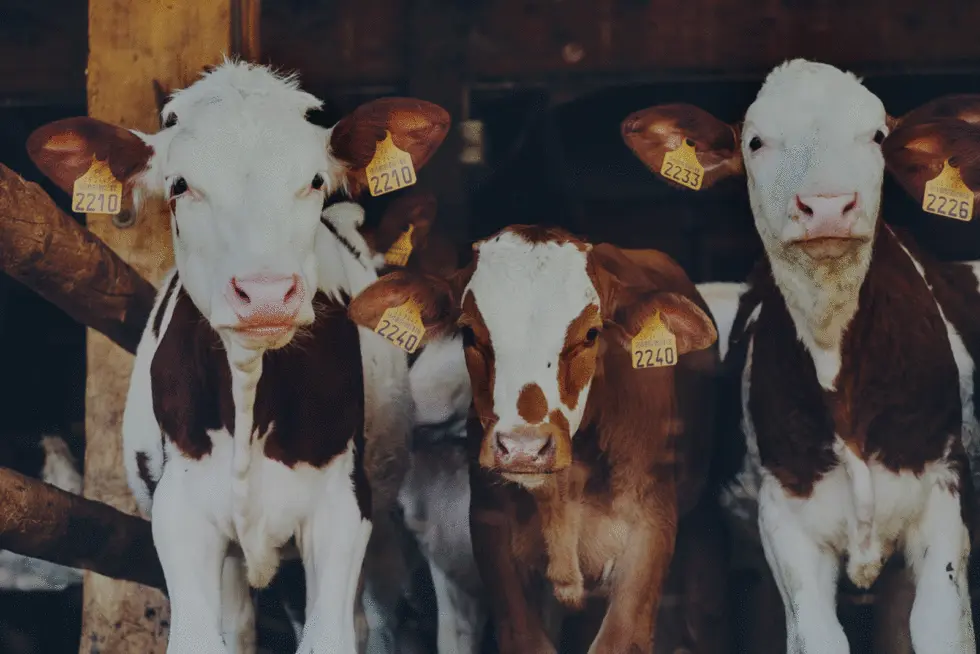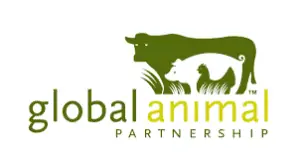
The Global Animal Partnership (GAP) certification program is comprised of a series of step levels, each corresponding to a set of animal welfare standards. The rigor of the standards increases with higher step levels. The Step 3 label means that the animals were raised on farms with improved living conditions and animal welfare practices. Chickens and pigs raised according to Step 3 standards have access to an outdoor space, but this space can be very small. The animals are also provided with materials, such as straw bales, forages, or scattered grains, which add complexity to the environment and encourage the expression of natural behaviors. There is no Step 3 for beef cattle. For all step levels, the GAP standards set limits on indoor ammonia levels, prohibit routine drug use (including antibiotics), prohibit animal waste products in feed, and prohibit routine tail docking of pigs. The label is verified.
Is the label verified?
Yes
Is the meaning of the label consistent?
Partially
Are the label standards publicly available?
Yes
Is information about the organization publicly available?
Yes
Is the organization free from conflict of interest?
Unknown
Was the label developed with broad public and industry input?
Yes
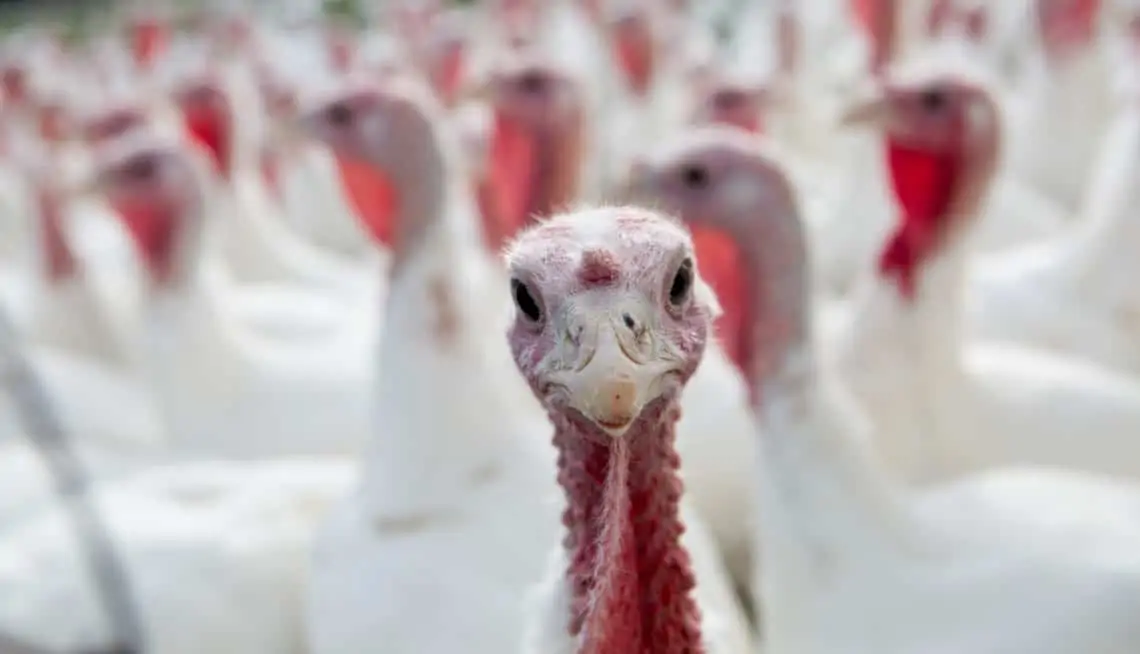
This label can be found on: Chicken, pork, turkey, sheep, goat, bison
(There is no Step 3 for beef cattle.)
ORGANIZATION: Global Animal Partnership
url: www.globalanimalpartnership.org
LABEL STANDARDS: www.globalanimalpartnership.org/5-step-animal-welfare-rating-program/standards
What this label means
The label means that the animals were raised on farms that were verified to meet the farm animal welfare standards of Global Animal Partnership, a non-profit organization that says it “promotes and facilitates continuous improvement in animal agriculture, encourages animal welfare friendly farming practices, and informs consumers about the animal farming systems they choose to support.”
The Global Animal Partnership program uses six tiers, or steps, each representing a different set of standards for how animals are raised on the farm. The step level that is achieved is indicated on the label. Step 1 is the lowest rating; Step 5+ is the highest. Higher step levels signify that higher standards of animal welfare were met.
For Step 3, the claim on the label is “enhanced outdoor access.”
In our analysis, we found that the standards for Step 3 fall short in meeting what consumers might expect from an “enhanced outdoor access” marketing claim, since the minimum space requirement for the enhanced outdoor area for chickens and pigs is very small.
There are benefits to choosing meat and poultry with Global Animal Partnership certification: For example, the standards for all step levels set limits on indoor ammonia levels and prohibit routine drug use, animal waste products in feed, and routine tail docking of pigs. Also, Step 3 offers at least some access to the outdoors, which is better than none. (No outdoor access is required for Steps 1 and 2.)
The benefits of choosing Step 3 over 1 and 2 include higher space requirements for chickens and some outdoor access for chickens and pigs (although the outdoor space is small). For chickens, the requirement for continuous darkness at night is 8 hours instead of 6 in Steps 1 and 2. For beef, there is no Step 3.
We take a closer look at some of the requirements in the standards for some of the species that can be certified. Note that this is a summary; to read the standards in their entirety, click on the links above.
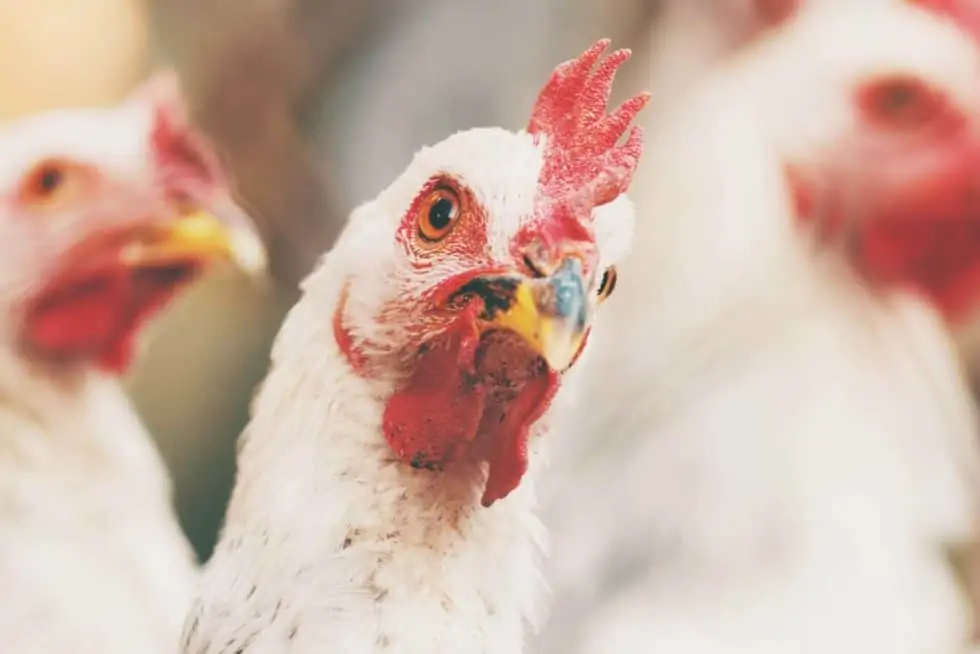
A closer look at the standards for broilers (chicken)
Indoor space per bird
The Step 3 indoor space requirement for a chicken is roughly 10.9 by 10.97 inches for a 5-pound bird. This is an improvement over steps 1 and 2.
The Step 3 minimum indoor space requirement is roughly 0.83 square feet per 5-pound bird. (The standards state that the stocking density should not exceed 6.0 pounds of chicken per square foot.) This is a slight, 23.9 percent increase over the industry norm, which gives each 5-pound chicken roughly 9.6 by 10 inches (0.67 square feet).
For housing, chickens must be given enough space to express natural behaviors, which include standing, turning around, and preening (using the beak to straighten and clean feathers) without touching another bird.
Clean litter
The standards for clean litter are the same for all step levels. Floors of all houses, including mobile houses that are stationary for more than three days, must be covered with non-toxic, fibrous, and friable litter. Up to 12 inches in width of caked litter would be allowed directly under water lines. Litter must be of quality and quantity to provide a comfortable environment and allow for dustbathing behavior. This requirement exceeds the industry norm.
Indoor air / Ammonia levels
The standards for ammonia are the same for all step levels. The standards state that an intervention plan designed to improve air quality must be implemented immediately if air quality levels exceed 20 ppm or a score of 2 on Global Animal Partnership’s air quality scale, which allows producers to use sensory evaluation to determine whether they should take action. On this scale, a score of 2 means the producer rates the odor as “distinct” and experiences watery eyes and/or coughing. (The human nose can detect the smell of ammonia at around 5 ppm.)
Lighting
The standards for Step 3 require that chickens experience a daily minimum of eight hours of continuous darkness throughout their lives. This is an improvement over steps 1 and 2, which require six hours of darkness. All step levels exceed the industry norm of only four hours of continuous darkness per 24-hour cycle after the first four weeks of life.
Environmental enrichment
To qualify chickens as Step 3 rated (as well as Step 4), they must have at least two types of enrichment, and it must be provided to them by the time they are 10 days old. Global Animal Partnership defines environmental enrichments as material that are provided to animals to “add complexity to their environment, encourage the expression of natural behavior, and decrease the expression of abnormal and deleterious behavior.” Examples of acceptable enrichments include bales of straw of hay, raised platforms, provision of forages or brassicas (e.g., broccoli), and scattered grains. Steps 3 and 4 are an improvement over Step 1, which requires no enrichment, and Step 2, which requires one type of indoor environmental enrichment. Step 3 exceeds the industry norm. (Chickens raised in Steps 5 and 5+ live mostly outdoors so indoor environmental enrichment is not needed.)
Outdoor access
Outdoor access is required for Step 3 through 5+; however, for Step 3, the minimum outdoor space requirement is very small. This is an improvement over steps 1 and 2, which do not require outdoor access.
Beginning at 4 weeks of age for chickens and 7 weeks for turkeys, continuous access to the outdoors during daylight hours must be available. The only exception is if climatic conditions pose a risk to the poultry’s welfare. (Those climatic conditions are not defined.) The openings from the indoor housing to the outdoor area must allow poultry to have continuous access during daylight hours. Any chickens slaughtered before the age of 28 days must have been given access to the outdoors during daylight hours for at least two weeks. The standards also specify that chickens must be managed and maintained to minimize parasites and disease, which means the land should be rotated and rested between flocks.
The space requirement for outdoor areas must be equal to or greater than 25 percent of the total indoor floor space. In order to achieve Step 3 rated poultry, at least 25 percent of the outdoor area must be covered in vegetation and/or forage; litter does not qualify as forage. The chickens’ occupied outdoor area must encourage the birds to range and provide shade, natural or artificial, in each occupied outdoor area (with bushes and shrubs, shade cloth, A-frame structures, or perches).
Genetics and better breeds / limit on fast growth
For all step levels, breeds and genetic lines must be chosen for good leg health and low levels of mortality.* There is no limit on the rate of growth. This slightly exceeds the industry norm of using chickens that have been bred for rapid growth at the expense of the birds’ health and welfare.
* The standards specify what would be considered a “low level of mortality.” For Step 4, an intervention plan has to be implemented if flock mortality exceeds 0.35percent in a 24-hour period. This is exceeds the standard for Steps 1-3, which is 0.5percent mortality in a 24-hour period.
Slaughter
There are no slaughter standards for chickens for any of the step levels.
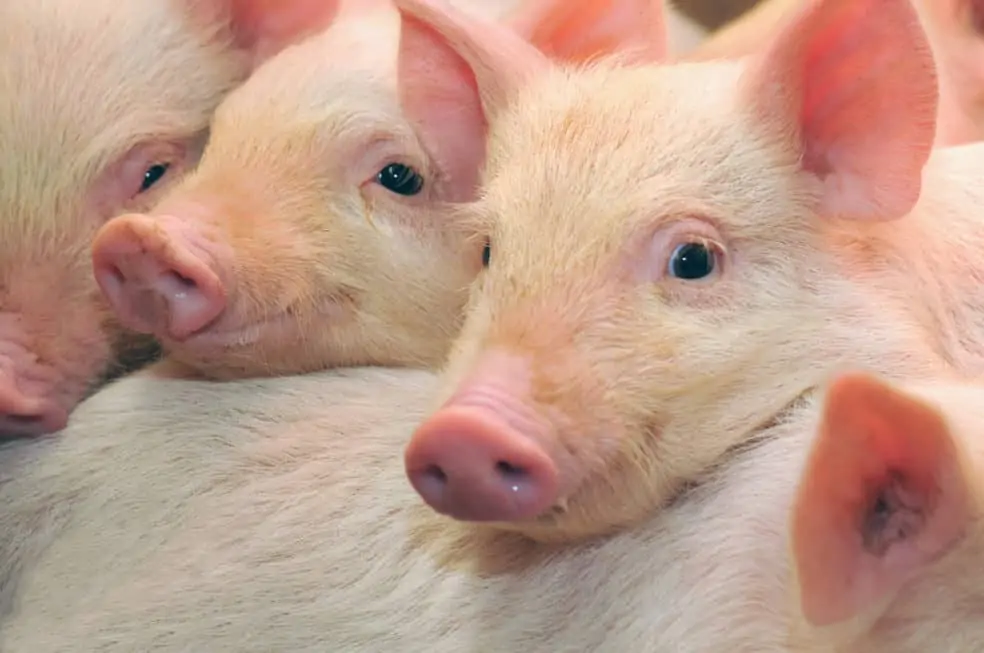
A closer look at the standards for pigs (pork)
Indoor space per growing pig
Minimum indoor space requirements vary according to the weight of the pigs and exceed the industry norm. Each group of pigs must have separate areas for lying, exercising, feeding, and defecating.
For nursery pigs up to 35 pounds, the minimum space requirement is the same as for Steps 1 and 2: 4.5 square feet or 0.42 square meters per pig and at least 3.5 of the 4.5 square feet must be bedded and sheltered. For Step 3, the remaining square foot has to be outdoors.
For nursery pigs between 36 and 55 pounds, the minimum space requirement is the same as for Steps 1 and 2: 6 square feet2 or 0.56 square meters per pig and at least 4.5 of the 6 square feet must be bedded and sheltered. For Step 3, the remaining 1.5 square feet must be outdoors.
For market pigs between 56 and 112 pounds, the minimum space requirement is the same as Steps 1-2: 7 square feet or 0.65 square meters per pig and at least 5.25 of the 7 square feet must be bedded and sheltered. For Step 3, the remaining 1.75 square feet must be outdoors.
For market pigs larger than 112 pounds, the minimum space requirement is 18 square feet or 1.7 square meters per pig, and at least 9 of the 12 square feet must be bedded and sheltered, while the other percentage may be either indoors or outdoors. This is larger than that required for Steps 1 and 2 but not as large as the higher steps’ minimum requirement.
The minimum space requirement for boars is the same for all step levels. For boars less than 350 pounds, the minimum space requirement is 48 square feet or 4.5 square meters per boar; for boars more than 350 pounds, the minimum space requirement per animal is 64 square feet or 5.9 square meters. This space includes the entire pen and areas for lying, exercise, feeding, and defecation.
Crates for gestating and farrowing sows
Gestation crates and farrowing crates are prohibited for all step levels, a standard that exceeds the industry norm of housing pregnant sows (gestating sows) and sows with piglets (farrowing sows) in crates that are too small to allow the animal to turn around or move freely.
For farrowing sows and gilts, both farrowing pens (indoors) and farrowing huts (outdoors) must have a minimum space of 48 square feet which must allow the sow to turn around completely and to be fully outstretched in the pen. This applies to steps 1 through 4.
For group farrowing, sows must have a minimum space of 48 square feet,and the space for farrowing must be at least 35 square feet and cannot inhibit the sow from turning around and lying fully outstretched. This applies to steps 1 through 4.
Farrowing pens and huts must include a protected space for piglets, and proper nest-building materials must be provided to sows at least three days prior to the farrowing date. This applies to all step levels.
For gestating sows, the minimum lying space is 16 square feet and must be bedded. This applies to all step levels. For Step 3 specifically, an additional area for exercise, feeding, and defecation space must measure at least 40 square feet. At least 20 square feet must be outdoors, but not necessarily bedded. The remaining space can be indoors or outdoors and does not need to be bedded.
Clean bedding
The standards for bedding are the same for all step levels: All pig housing must have bedding that provides comfort, thermal protection, and cleanliness. The bedding must be maintained daily. Slatted floors cannot exceed more than 25 percent of the total area available to the pigs.
Indoor air / ammonia levels
The standards for indoor ammonia are the same for steps 1 through 4. (Steps 5 and 5+ do not address ammonia because those pigs live outdoors.) The standards state that an intervention plan designed to improve air quality must be implemented immediately if air quality levels exceed 20 ppm or a score of 2 on Global Animal Partnership’s air quality scale, which allows producers to use sensory evaluation to determine whether they should take action. On this scale, a score of 2 means the producer rates the odor as “distinct” and experiences watery eyes and/or coughing.
Environmental enrichment
Environmental enrichments are required for steps 2 through 4 (not 5 and 5+, since those pigs live mostly outdoors). Enrichments must be provided to gestating sows, replacement animals, sows, and pigs from weaning throughout the growth period. Global Animal Partnership defines environmental enrichments as material that are provided to animals to “add complexity to their environment, encourage the expression of natural behavior, and decrease the expression of abnormal and deleterious behavior.” Examples of indoor environmental enrichment include straw bales, hay, silage, wood chips, branches, whole crop peas and barley, compost, peat, or other natural materials.
Outdoor access
The standards for Step 3 require a small outdoor space: 6 square feet of outdoor space for a growing pig weighing more than 112 pounds. Outdoor access is not required for Step 1 and Step 2.
Physical alterations
The standards prohibit tail docking for all step levels. This exceeds the industry norm of docking the tails of pigs to prevent aggressive tail biting, a problem that arises from various factors, including the animals’ close confinement, heat stress and cold stress, and boredom due to a barren environment. When tail biting occurs on GAP certified farms, the standards require that the incident is promptly addressed, managed, and recorded.
De-tusking, teeth clipping, routine teeth grinding/filling, and nose ringing are also prohibited. Exceptions are possible, however: If it’s necessary to trim tusks, it must be done without cutting into the sensitive pulp chamber and without the use of bolt cutters/chopping devices. Nose ringing is prohibited in market animals, or pigs raised for slaughter. But the procedure is allowed in certain cases: for example, sows (female pigs that give birth to those raised for slaughter) can cause damage to soil structures in certain areas of pasture; in those instances, nose ringing is permissible. If the sow loses the ring, it cannot be replaced. Slap marking (a temporary tattoo) and tattooing are acceptable for identification. No more than two ear tags per animal are permitted, one in each ear. For pigs, ear notching must be conducted before 10 days of age.
For steps 1 through 4, piglets must be castrated before 10 days of age, where the age is calculated from the farrowing date of the sow. Piglets can only be castrated using a sharp, clean instrument, such as a scalpel, razor blade, or surgical scissors. The use of side cutters or any instrument not designed to cut soft tissue is prohibited. Global Animal Partnership strongly encourages the administration of anesthetic and postoperative analgesia to ease pain and discomfort, but this is not required.
Blunt force trauma
The use of blunt force trauma—a sharp blow to the head that kills young piglets by destroying the skull and brain tissue—is prohibited as a method of euthanasia for all step levels.
Slaughter
While there are no slaughter standards for beef and chickens, the standards for all step levels require that pigs are slaughtered at a facility that has passed and holds a current third-party animal welfare audit based on the American Meat Institute’s Recommended Animal Handling Guidelines and Audit Guide. Slaughter plants must pass all core criteria and all secondary criteria with a minimum overall score of 90 percent. An effective stun/kill rate of at least 95 percent on the first attempt is required, which means the standards allow up to 5 percent of the animals to suffer between a first failed attempt and the second or successful attempt, whichever comes later.

A closer look at the standards for cattle (beef)
There is no Step 3 for beef cattle.
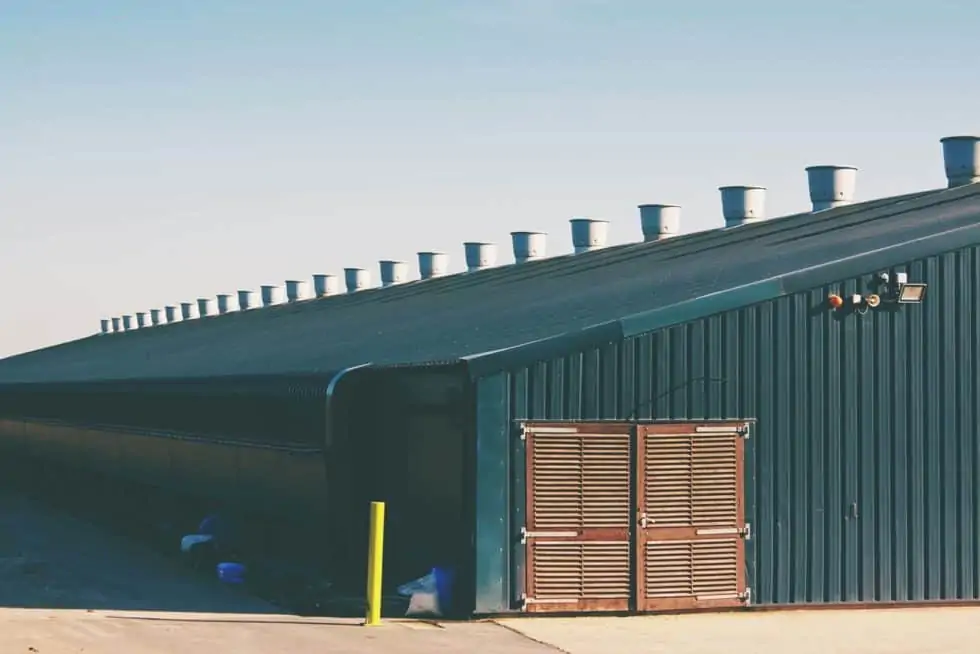
A closer look at the standards for:
The requirements below are the same for all step levels. Antibiotic use
Global Animal Partnership standards prohibit the use of antibiotics, except for chickens, for all step levels. If a market animal becomes sick and must be treated with antibiotics, that animal must be identified and removed from the Global Animal Partnership program. The standards also state that sick or injured animals must receive immediate individual treatment designed to minimize pain and suffering.
To protect public health and combat the global threat of antibiotic resistance, antibiotics in animal agriculture should only be used to treat diagnosed disease. It is the industry norm to use antibiotics for disease prevention and control, as well as for disease treatment. The Global Animal Partnership standards exceed the industry norm for antibiotic use, except for chickens.
Drugs for growth promotion
Growth hormones (beef only)
Growth hormones are prohibited for all step levels. The FDA allows beef cattle to be implanted with growth hormones, so the GAP standards exceed the industry norm for growth hormone use.
However, the Global Animal Partnership standards do not prohibit the use of hormones such as oxytocin for reproductive purposes.
Beta agonists (beef, pork, turkey)
Beta agonists, which are drugs used for growth promotion, are prohibited for all step levels.
The FDA allows growth promoting drugs, such as beta agonists, to be added to feed for beef cattle, pigs, and turkeys. By prohibiting beta agonists in feed, the GAP standards exceed the industry norm.
Animal by-products in feed
For all step levels, animal by-products are prohibited in feed, including mammalian and avian-derived protein.
For chickens, turkeys, and pigs, the use of mammalian, avian, fish, and fish by-products is prohibited. For beef/cattle, mammalian and avian by-products and wastes (with the exception of milk and milk-derived products) are prohibited. By-products include animal waste and products derived from slaughter, including meat, bones, blood, fat, and feathers. For fish, this includes whole fish, parts of fish, fish meal, fish by-products from the processing industry, and other aquatic species and/or products. It does not include seaweed or oyster shell.
The FDA prohibits ruminant-derived protein sources in dairy cow and beef cattle feed, but it allows pig and poultry slaughter waste products, poultry litter, and feces. In pig and poultry feed, the FDA does not restrict the use of slaughterhouse waste products and waste from livestock operations, such as poultry litter and feces. The GAP standards exceed the industry norm for animal by-products in feed.
GMOs in feed
GMOs are allowed in animal feed. This applies to all step levels.
CONSUMER REPORTS EVALUATION
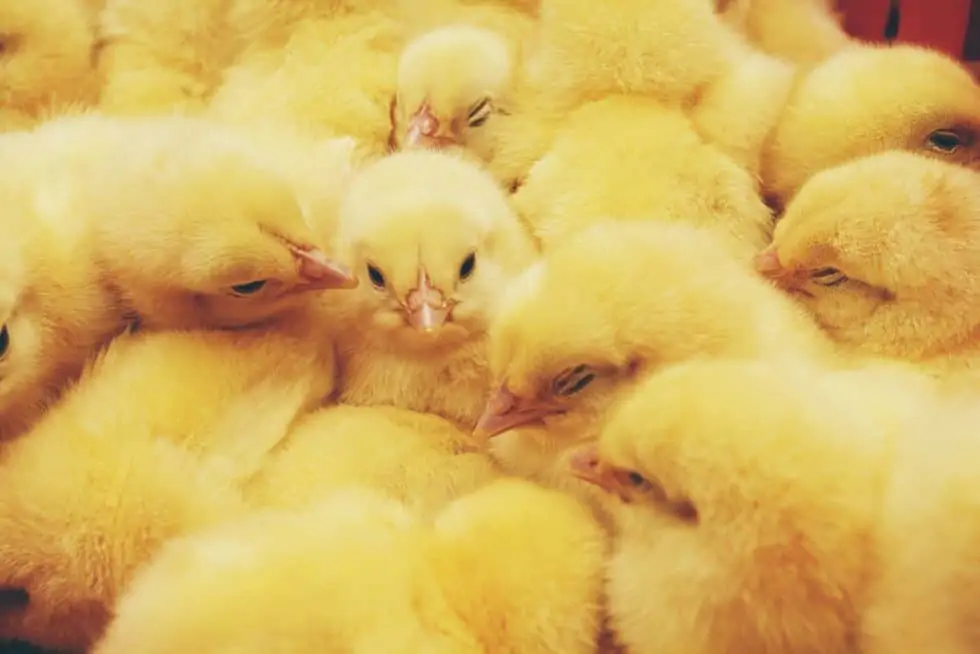
How meaningful is this label?
In our analysis, we found that the standards for Step 3 fall short in meeting what consumers would expect from an “enhanced outdoor access” claim.
For chickens, the requirements would allow a flock of 20,000 chickens to be contained in an enhanced outdoor area (covered with vegetation and/or forage) as small as one-third the size of a standard tennis court. That’s less than one quarter the size of a standard basketball court.
More on outdoor space requirement for chickens: Step 3 for chickens requires that the outdoor space is equal to or greater than 25 percent of the indoor space. Since the minimum indoor space requirement is 0.83 square feet for a 5-pound bird, this means that the minimum outdoor space requirement is 0.20 square feet per bird. That’s approximately 5 by 6 inches of outdoor space per chicken. The Step 3 standard requires that 25 percent of the outdoor space is covered with vegetation and/or forage, which means that each chicken is provided only 0.05 square feet of vegetated or enhanced outdoor space. That is an area of approximately 2.9 by 2.5 inches per 5-pound chicken. In a flock of 20,000 birds, the area of outdoor space with vegetation and/or forage could be 1,000 square feet. For comparison, a standard tennis court is 2,808 square feet,and a standard basketball court is 4,700 square feet.
For pigs, the minimum outdoor space requirement for a 100-pound pig is no larger than two letter-sized pieces of paper. None of this space needs to be covered with vegetation.
More on outdoor space requirement for pigs: For a nursery pig of up to 35 pounds, the standards require 4.5 square feet of space, which is to be divided between the indoor and the outdoor space. Since the standard requires an indoor space of at least 3.5 square feet, that leaves an outdoor space of at least 1 square foot, which is 12 by 12 inches. For a market pig between 56 and 112 pounds, the minimum space requirement is 7 square feet, which is to be divided between the indoor and the outdoor space. Since the indoor space has to be at least 5.25 square feet, that leaves a minimum outdoor space requirement of 1.75 square feet, which is approximately 252 square inches. This is approximately 16 by 16 inches. For comparison, a letter-sized piece of paper measure roughly 8.5 by 11 inches.
There is no Step 3 for beef cattle.
For all step levels, except for chickens, the use of antibiotics is prohibited (except to treat sick animals, which can then not be sold with the Global Animal Partnership label). Growth hormones, growth promoting drugs, and animal by-products in feed are prohibited for all step levels and all species.
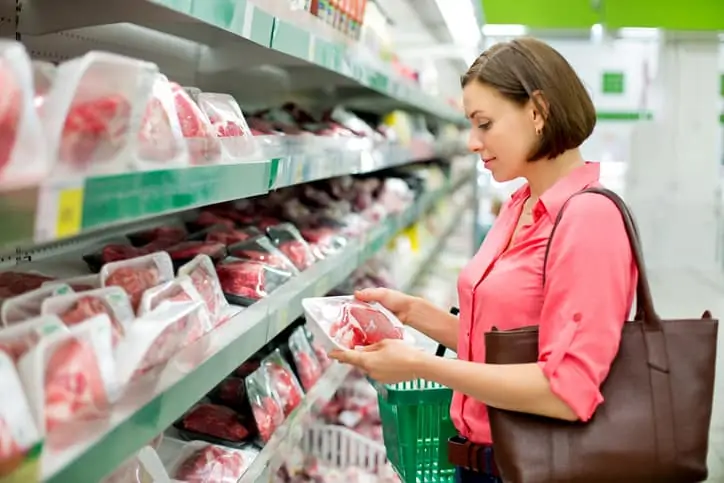
Is the label verified?
Yes
Farms are inspected by a third-party certification agency every 15 months to ensure that, over time, farms will be inspected in all four seasons. The policy manual for Global Animal Partnership does not mention unannounced inspections as part of the verification process, and Global Animal Partnership did not respond to our inquiries.
Global Animal Partnership works with three certification agencies: IMI Global, EarthClaims, LLC, and AUS-MEAT Limited (for beef in Australia).
Is the meaning of the label consistent?
While the standards are generally consistent across species, there is an inconsistency: Beef, turkey, pork, and bison meat from animals that were treated with antibiotics cannot be sold as GAP certified under any step, while all steps for chickens allow the therapeutic use of antibiotics.*
*GAP certified meat treated with antibiotics would not be sold at Whole Foods Market stores, which prohibit all antibiotic use. GAP products found outside of Whole Foods follow the antibiotic use described above.
Are the label standards publicly available?
Yes. The standards are posted on the website.
www.globalanimalpartnership.org/5-step-animal-welfare-rating-program/standards
Is information about the organization publicly available?
Yes
Board of Directors: Members of the Board of Directors are listed on its website, including the director’s affiliations.
Financial Information: The organization is a not-for-profit 501(c)(3) organization, and its IRS Form 990 is publicly available.
Is the organization free from conflict of interest?
Unknown.
Standards development: Several members of the organization’s Board of Directors are either GAP-certified livestock producers or employees of companies that sell GAP-certified products. The organization’s bylaws were not shared with Consumer Reports, so we could not verify whether board members with a conflict of interest vote on the standards.
Verification: The organization’s bylaws were not shared with Consumer Reports, so we could not verify whether there is a conflict of interest policy for certifiers.
Was the label developed with broad public and industry input?
Yes.
Standards development: The standards are initially drafted by members of a scientific committee, which includes academics, producers, and other experts in the particular species. The standards are reviewed by invited experts from various stakeholder groups and posted online for public comment.
Standards updates: When changes to the standards are made, GAP distributes the draft to its participating producers and posts the draft on its website, inviting public comments. The draft is revised based on public comments before the board ratifies the changes.
